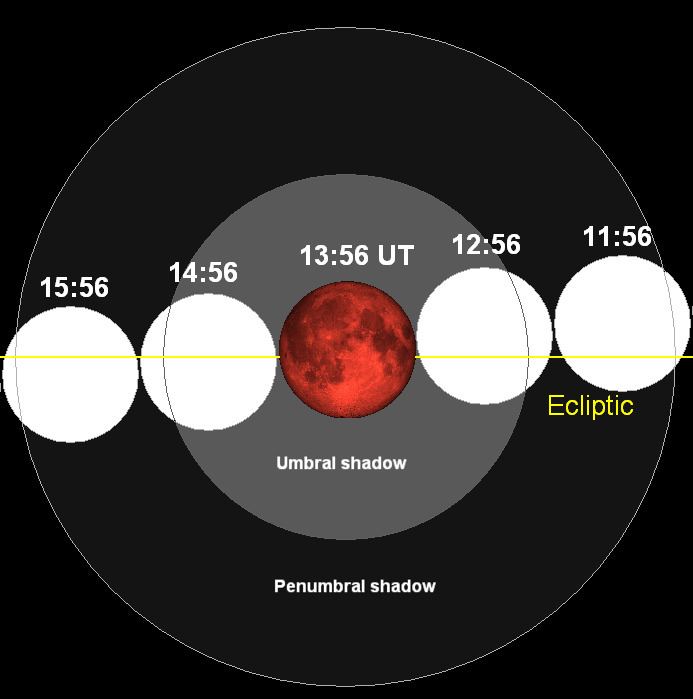 | ||
A total lunar eclipse took place on July 16, 2000, the second of two total lunar eclipses in 2000.
Contents
The Moon passed through the very center of the Earth's shadow. Totality lasted for 106 minutes, the longest duration since July 26, 1953 and August 13, 1859, and next longer won't be until the year 3000.
Visibility
It could be seen completely over Australia, seen rising over Asia, and Eastern Africa, and setting over Western North and South America.
Saros series
Lunar saros cycle series 129, repeating every 18 years and 11 days, has a total of 71 lunar eclipse events including 11 total lunar eclipses.
Tritos series
The tritos series repeats 31 days short of 11 years at alternating nodes. Sequential events have incremental Saros cycle indices.
This series produces 23 total eclipses between June 22, 1880 and August 9, 2120.
Inex series
The inex series repeats eclipses 20 days short of 29 years, repeating on average every 10571.95 days. This period is equal to 358 lunations (synodic months) and 388.5 draconic months. Saros series increment by one on successive Inex events and repeat at alternate ascending and descending lunar nodes.
This period is 383.6734 anomalistic months (the period of the Moon's elliptical orbital precession). Despite the average 0.05 time-of-day shift between subsequent events, the variation of the Moon in its elliptical orbit at each event causes the actual eclipse time to vary significantly.
All events in this series shown (from 1000 to 2500 and beyond) are central total lunar eclipses.
